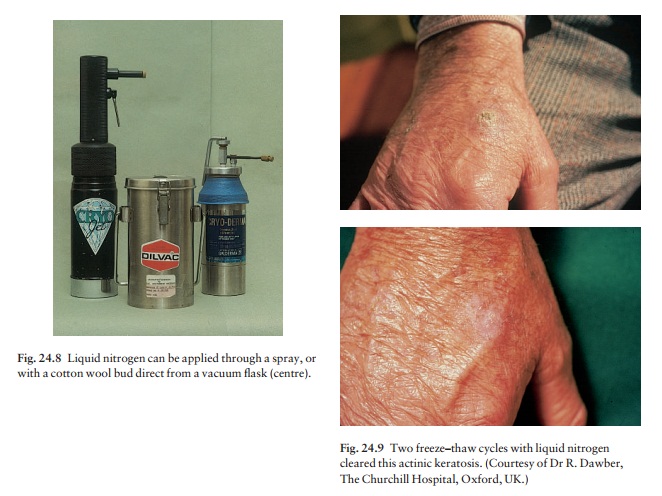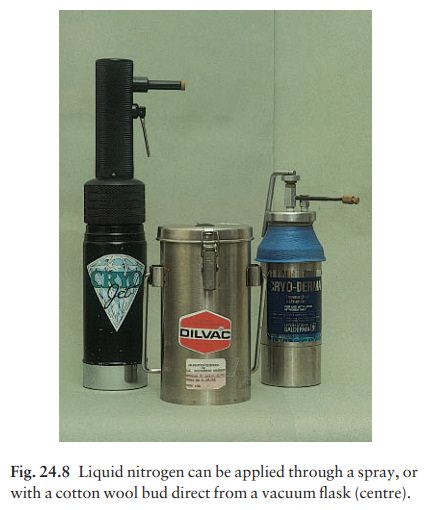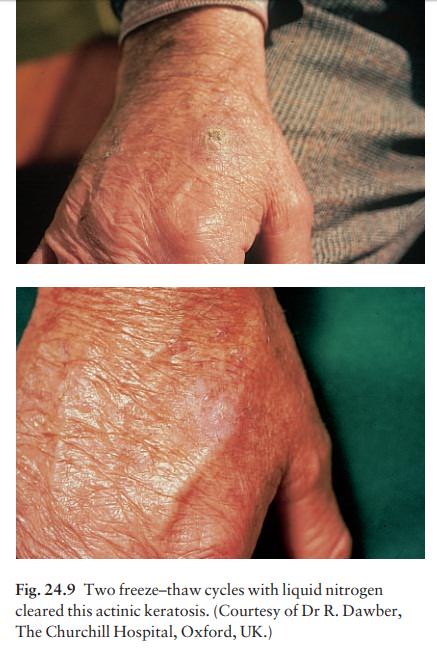Chapter: Clinical Dermatology: Physical forms of treatment
Cryotherapy - Physical forms of treatment

Cryotherapy
Liquid
nitrogen (–196°C) is now used more often than carbon dioxide snow (‘dry ice’,
–79°C). It is effective for viral warts, seborrhoeic keratoses, actinic
keratoses and some superficial skin tumours (e.g. intraepidermal carcinoma and
lentigo maligna). It is applied either on a cotton bud or with a special spray
gun (Fig. 24.8). The lesion is frozen until it turns white, with a 1–2 mm halo
of freezing around.

Two freeze–thaw
cycles kill tissue more effectively than one but are usually unnecessary for
warts and some keratoses (Fig. 24.9). Patients should be warned to expect pain
and possible blistering after treatment. Care should be taken when treating
warts on fingers as digital nerve damage can occur after overenthusi-astic
freezing. Standard freeze–thaw times have been established for superficial
tumours but temperature probes in and around deep tumours are needed to gauge
the degree of freezing for their effective treat-ment. A crust, including the
necrotic tumour, should slough off after about 2 weeks. Melanocytes are very sensitive to cold injury;
hypopigmentation at a treated site is common and may be permament.

Related Topics